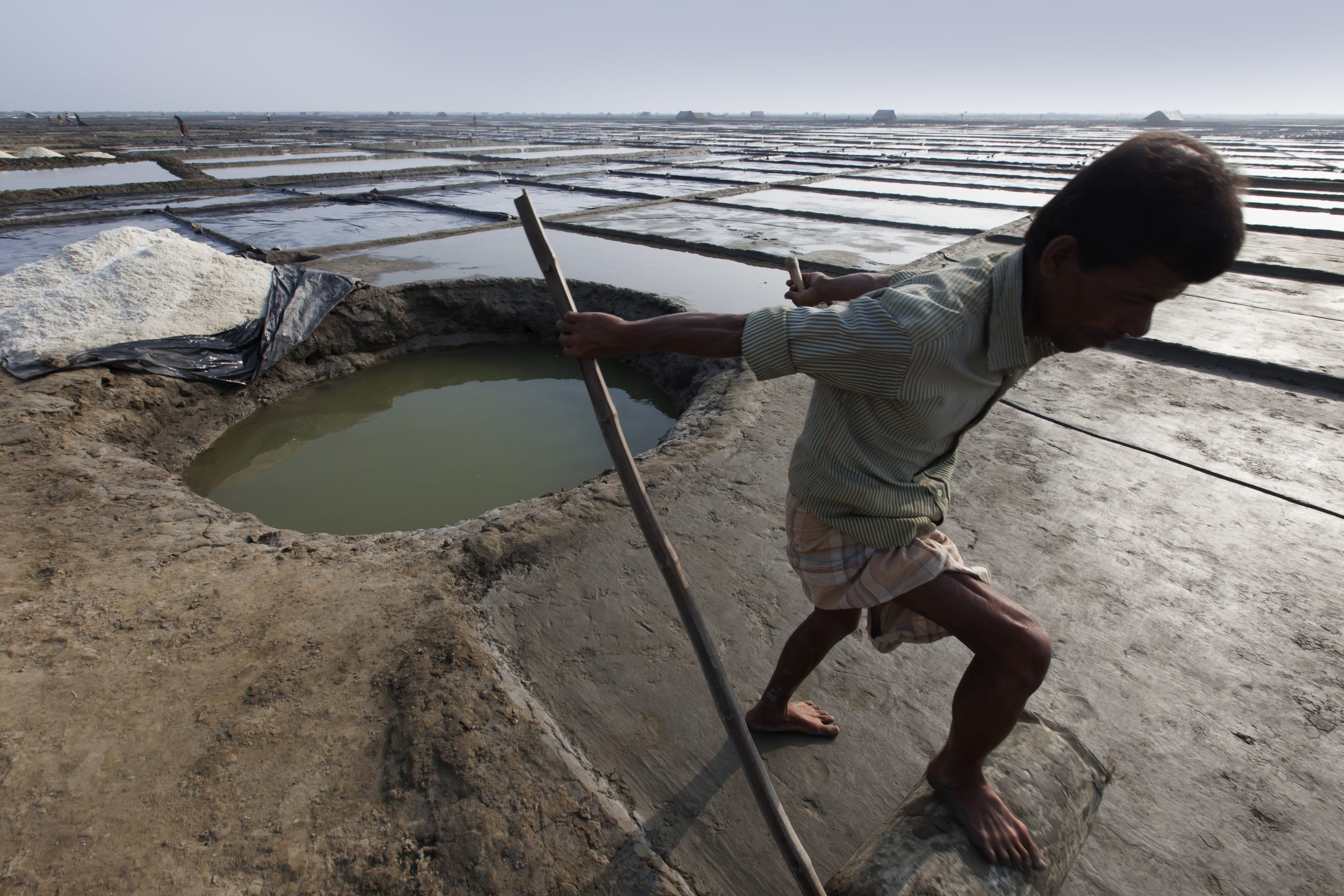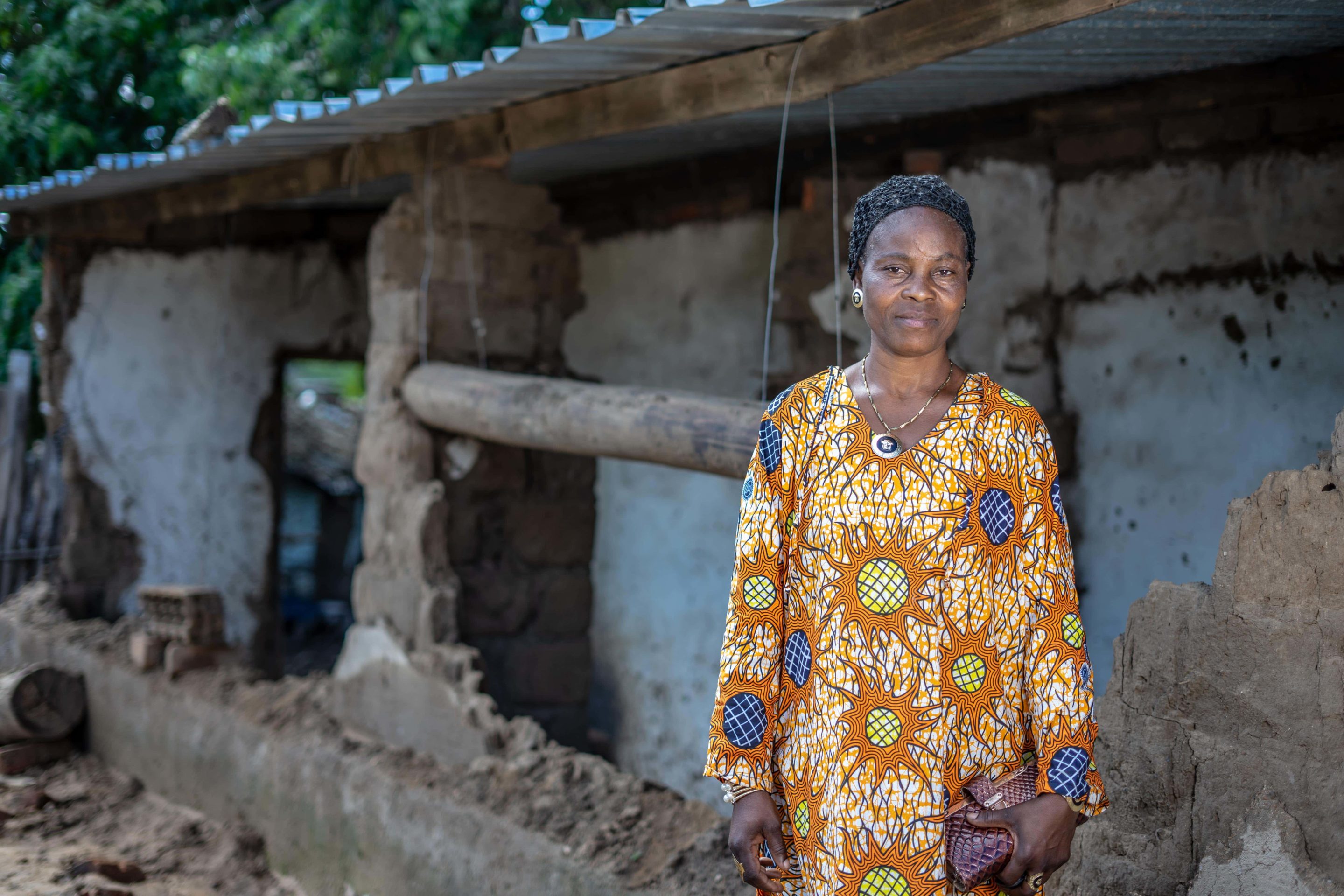
Jafar farming salt in Cox’s Bazar, Bangladesh. ©UNHCR/Saiful Huq Omi
How the growing global crisis is forcing millions from their homes
By Hannah Scott
Twenty years ago, Kutubdia in Bangladesh’s Cox’s Bazar district was a fertile land where farmers could grow paddy. Now, because of the effects of climate change, the only crop that can grow there is salt.
Jafar Alam, a Bangladeshi salt farmer, is barely able to earn his living and fears becoming displaced. Though his father had left him his land, rising sea levels resulted in the property becoming completely saline and unable to grow anything green.
In Bangladesh, both the host communities and Rohingya refugees who fled Myanmar are facing worsening conditions at the hands of climate change. Kutubdia is expected to be under water in 25 years, affecting more than 10 million members of the host community as well as many refugees who will be displaced once again.
Though climate change is a threat that will impact people all over the world — including Canada — it cannot be ignored that refugees and displaced persons are particularly vulnerable to its effects, says Andrew Harper, UNHCR’s Special Advisor on Climate Action.
Climate change is yet another threat to people who have already been forced to flee from conflict, poverty and persecution. More than six million refugees are located in some of the world’s least developed countries — nations which are also highly vulnerable to the effects of climate change.
Research from the World Economic Forum has indicated that the Earth’s climate is changing at a rate that has exceeded most scientific forecasts. Currently, the planet is warming by about 0.2 degrees Celsius every decade. This environmental shift has been the cause of frequent and intense natural disasters, like hurricanes in Southern Africa and the Caribbean, droughts in Afghanistan, and Tropical Cyclone Gita, which was the strongest and most devastating cyclone to strike Tonga in its recorded history.
Climate change can be a primary driver of people being forced to leave their homes because of a natural disaster. Its effects can also add to the already daunting list of factors causing people to flee.
“Forced displacement itself can be a source of tension and potential conflict if there is added competition for natural resources, land rights, food and water — problems amplified by the adverse effects of climate change,” Harper says.
“People already displaced for reasons other than disasters often reside in climate change ‘hotspots’ and may be forced from their homes for a second time.”
Barwako Abdi and her family have been displaced twice because of drought: once in 2011 when they fled to Somalia, and again in 2019, forcing her family to flee to Ethiopia.
“There is endless drought. I left because of my children. Living on the farm when there is drought is always difficult. I have raised my children in hardship,” Abdi says.
When Tropical Cyclone Idai tore through Mozambique, Zimbabwe and Malawi in March 2019, it killed almost 1,300 people and damaged the homes of millions of families across the three African countries. The cyclone caused intense flooding, which affected hundreds of thousands of people across Africa. Many refugees became displaced for a second time.

Congolese refugee, Deborah, 44, stands outside what was once her two-roomed house in Tongogara camp in Chipinge, Zimbabwe. Her home was destroyed by Cyclone Idai in 2019. ©UNHCR/Zinyange Auntony
Congolese refugee Deborah Nsuka Kibangu resettled in Zimbabwe with her two daughters where she thought they could start anew — but Cyclone Idai’s intense rain, wind and flooding destroyed her family’s home.
“My children don’t have a single pair of shoes. Everything was washed away,” Deborah says.
To help people like Deborah, UNHCR relocated many refugee families to safer shelters and provided them with tents, plastic sheeting, sanitation equipment and clean water.
While this offers short-term relief to those in need, climate change can have long lasting repercussions.
In January 2020, the UN Human Rights Committee determined that people who flee the effects of climate change and natural disasters should not be returned to their country of origin if essential human rights would be at risk on return. This landmark decision has far-reaching implications, demonstrating the importance of countries taking action to help those affected by climate change.
“In order to best support individuals who have been displaced by the impacts of climate change, we need to first better understand the relationship between climate change and displacement,” Harper says.
UNHCR has helped refugees face climate-related challenges through supplying renewable energy, providing seedlings to reverse deforestation, and mobilizing equipment, volunteers and enlisting staff to help clean up litter in refugee communities.
“By not taking urgent action, some of the most vulnerable people who have done the least to create the current crises, are suffering the consequences.”
Together with partners from around the world, UNHCR has implemented environmentally-conscious programs like distributing Liquefied Petroleum Gas — a clean cooking fuel — to Rohingya refugees.
Collaboration between organizations and countries is another vital step in addressing the climate crisis. For countries like Canada, there are ways to limit effects of the changing climate on everyone — including refugees.
“High-emitting countries, such as Canada, need to take drastic steps beyond solidarity,” he says. “The environmental and human price of emissions is felt considerably less within high-producing countries, but rather in countries that contribute dramatically less to the problem of climate change.”
The consequences of climate change take many forms, from a decrease in quality of life and an increase of conflict to the inability to farm. As temperatures rise, these problems will become more pronounced, threatening environmental sustainability and driving displacement.
“By not taking urgent action, some of the most vulnerable people who have done the least to create the current crises, are suffering the consequences,” Harper says.
READ THE ONLINE EDITION OF THE UNHCR MAGAZINE



